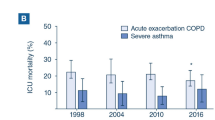Abstract
-
▴ Novolizer® is a multidose breath-actuated dry powder inhaler (DPI) approved for use with salbutamol (albuterol) and budesonide. It has multiple patient feedback mechanisms and an inspiratory flow rate threshold designed to optimise dosage.
-
▴ In two studies, children aged 4–11 years with asthma correctly used Novolizer® and generated mean peak inspiratory flow rates (PIFRs) through Novolizer® of 76 and 92.7 L/min, well above the Novolizer® threshold of 35–50 L/min.
-
▴ In healthy volunteers, median lung deposition of budesonide administered via Novolizer® was 19.9–32.1% at mean PIFRs of 54–99 L/min.
-
▴ In a randomised, double-blind, single-dose study in patients with chronic obstructive pulmonary disease (COPD) and asthma, the 1-hour improvement from baseline in mean maximum forced expiratory volume in 1 second (FEV1) was 21.3% with inhalation of salbutamol through Novolizer®, and 19.5% through Sultanol® pressurised metered-dose inhaler (MDI).
-
▴ FEV1 increased significantly in patients with asthma and COPD treated for 4 weeks in a randomised, open-label comparison of salbutamol through either Novolizer® or Sultanol® MDI.
-
▴ A randomised open-label study in adults with asthma treated with inhaled budesonide found equivalent improvements in FEV1 and symptoms with Novolizer® and Turbuhaler®.
-
▴ Novolizer® was well accepted overall. Most patients preferred it to previously used MDIs or DPIs. Only 4–5% found the taste feedback unacceptable. Physicians observed improved compliance over 4 weeks in 80% of patients with asthma using Novolizer®.



Similar content being viewed by others
Notes
Use of tradenames is for product identification purposes only and does not imply endorsement.
References
National Heart Lung and Blood Institute/World Health Organisation. Global strategy for asthma management and prevention: A NHLBI/WHO workshop report: National Institutes of Health. NIH Publication No. 02-3659 (revised 2002) [online]. Available from URL: http://www.ginasthma.com/workshop.pdf [Accessed 2003 Sep 8]
COPD Guidelines Group of the Standards of Care Committee of the BTS. BTS guidelines for the management of chronic obstructive pulmonary disease. Thorax 1997 Dec; 52 Suppl. 5: 1–28
Pauwels RA, Buist AS, Calverley P.M.A., et al. Global strategy for the diagnosis, management and prevention of chronic obstructive pulmonary disease. On behalf of the GOLD Scientific Committee (2001). Am J Critical Care Med 2001 Apr; 163(5): 1256–76
Cerveri I, Locatelli F, Zoia M. International variations in asthma treatment compliance: the results of the European Community Respiratory Health Survey (ECRHS). Eur Respir J 1999; 14: 288–94
Crompton GK. Problems patients have using pressurised aerosol inhalers. Eur J Respir Dis 1982; Suppl. 119: 101–4
Giraud V, Roche N. Misuse of corticosteroid metered-dose inhaler is associated with decreased asthma stability. Eur Respir J 2002; 19: 246–51
British Thoracic Society, Scottish Intercollegiate Guidelines Network. British guideline on the management of asthma: a national clinical guideline. Thorax 2003 Feb; 58 Suppl. 1: 1–94
van der Palen J, Klein JJ, van Herwaarden CL, et al. Multiple inhalers confuse asthma patients. Eur Respir J 1999 Nov; 14(5): 1034–7
Matthys H. Inhalation delivery of asthma drugs. Lung 1990; 168 Suppl.: 645–52
Newman SP, Busse WW. Evolution of dry powder inhaler design, formulation and performance. Respir Med 1996 May; 5: 293–304
Fyrnys B, Stang N, Wolf-Heuss E. Stability and performance characteristics of a budesonide powder for inhalation with a novel dry powder inhaler device. Curr Opin Pulm Med 2001 Apr; 7 Suppl. 1: S7–11
Kohler D. Novolizer®: the new technology for the management of asthma therapy. Curr Opin Pulm Med 2003 Apr; 9 Suppl. 1: S11–6
Möller M, Fritsche D, Rivera D, et al. Improvement of asthma therapy by a novel budesonide multidose dry powder inhaler. Arzneimittel Forschung Drug Res 2003; 53(8): 562–7
von Berg A, Leupold W, Engel M, et al. Asthmatic chidren generate significantly different peak inspiratory flow rates (PIFR) through two different dry powder inhalers (DPI) [abstract no. P3101]. Eur Respir J 2003; 22 Suppl. 45: 4945
Viatris. The Novolizer® inhalation technology for diseases of the respiratory tract. Frankfurt: Viatris, 2002. (Viatris product information)
Dickhoff BH, Ellison MJ, de Boer AH, et al. The effect of budesonide particle mass on drug particle detachment from carrier crystals in adhesive mixtures during inhalation. Eur J Pharm Biopharm 2002 Sep; 54(2): 245–8
Ariyanda PL, et al. Aerosol delivery systems for bronchial asthma. Postgrad Medical J 1996; 72: 151–6
Newman SP, Pitcairn GR, Hirst PH, et al. Scintigraphic comparison of budesonide deposition from two dry powder inhalers. Eur Respir J 2000 Jul; 16(1): 178–83
Greguletz R, Fuchs R-P, Fyrnys B. Aerodynamic precision of an inhalative medical device [abstract no. P1981]. Eur Respir J 2003; 22 Suppl. 45: 310S
Leupold W, Vogelberg C, Metzenauer P, et al. Clinical evaluation of the peak inspiratory flow generated by asthmatic children through the Novolizer®. Eur Respir J 2002 Sep; 20 Suppl. 38: 430
Newman SP. Drug delivery to the lungs from dry powder inhalers. Curr Opin Pulm Med 2003 Apr 1; 9 Suppl. 1: S17–20
Kunkel G, Chuchalin AG. Therapeutic equivalence of the Sofotec Novolizer® to established standard devices in COPD and asthma. Curr Opin Pulm Med 2001 Apr; 7 Suppl. 1: S15–7
Kunkel G, Metzenauer P, Virnkaes C, et al. Comparison of the bronchodilating effect of salbutamol delivered by a novel multiple dose dry powder inhaler or a conventional metered dose inhaler [abstract no. P475]. Eur Respir J 1999; 14 Suppl. 30: 61s
Chuchalin AG, Kremer HJ, Metzenauer P, et al. Clinical equivalence trial on budesonide delivered either by the Novolizer® multidose dry powder inhaler or the Turbuhaler® in asthmatic patients. Respiration 2002; 69(6): 502–8
Kunkel G, Metzenauer P, Burmann U, et al. Evaluation of a patient questionnaire assessing the use of a novel multiple dose dry powder inhaler following a 4-week treatment with salbutamol [abstract no. P3459]. Eur Respir J 1999; 14 Suppl. 30: 526s
Author information
Authors and Affiliations
Corresponding author
Rights and permissions
About this article
Cite this article
Fenton, C., Keating, G.M. & Plosker, G.L. Novolizer®. Drugs 63, 2437–2445 (2003). https://doi.org/10.2165/00003495-200363220-00010
Published:
Issue Date:
DOI: https://doi.org/10.2165/00003495-200363220-00010




